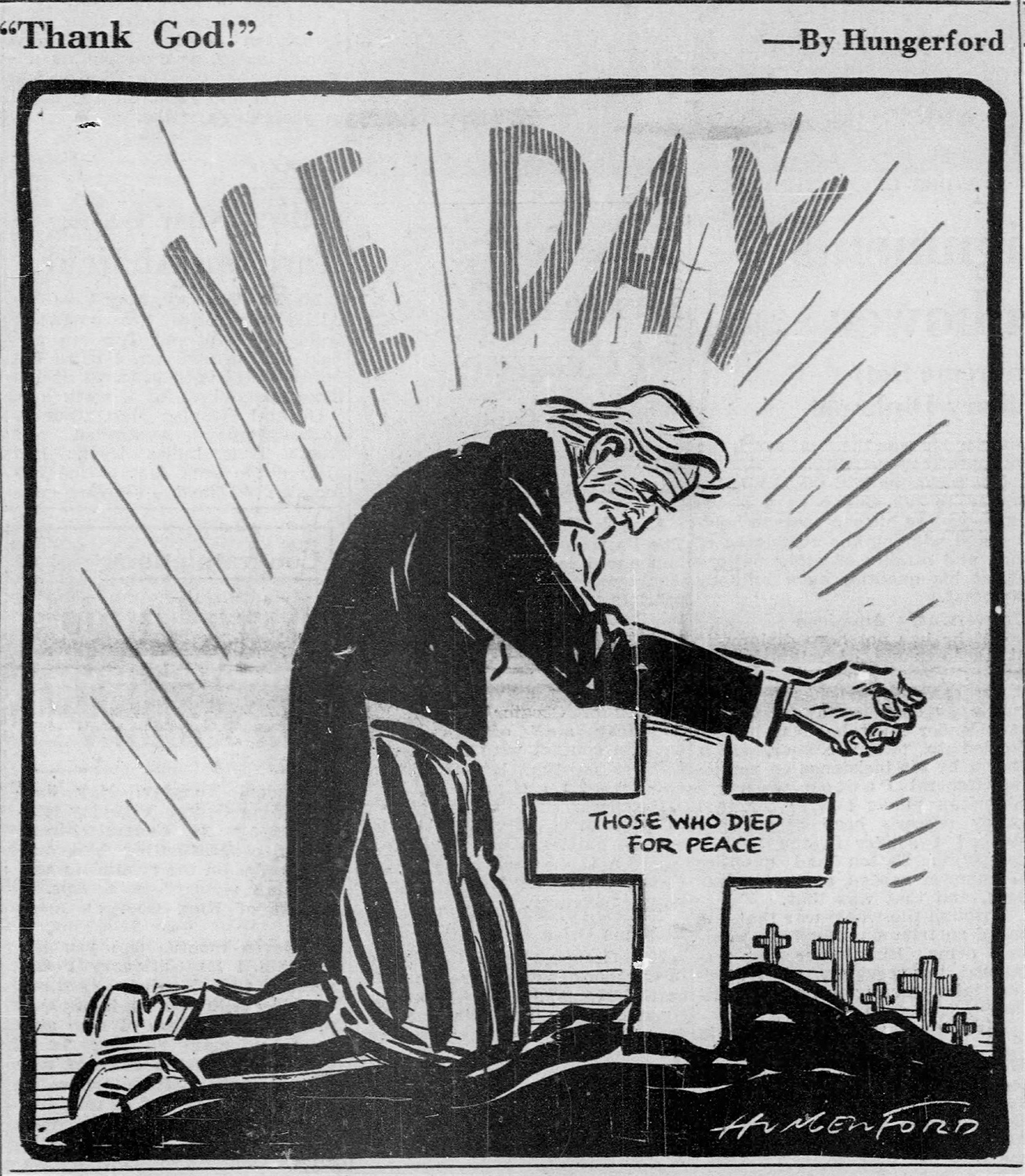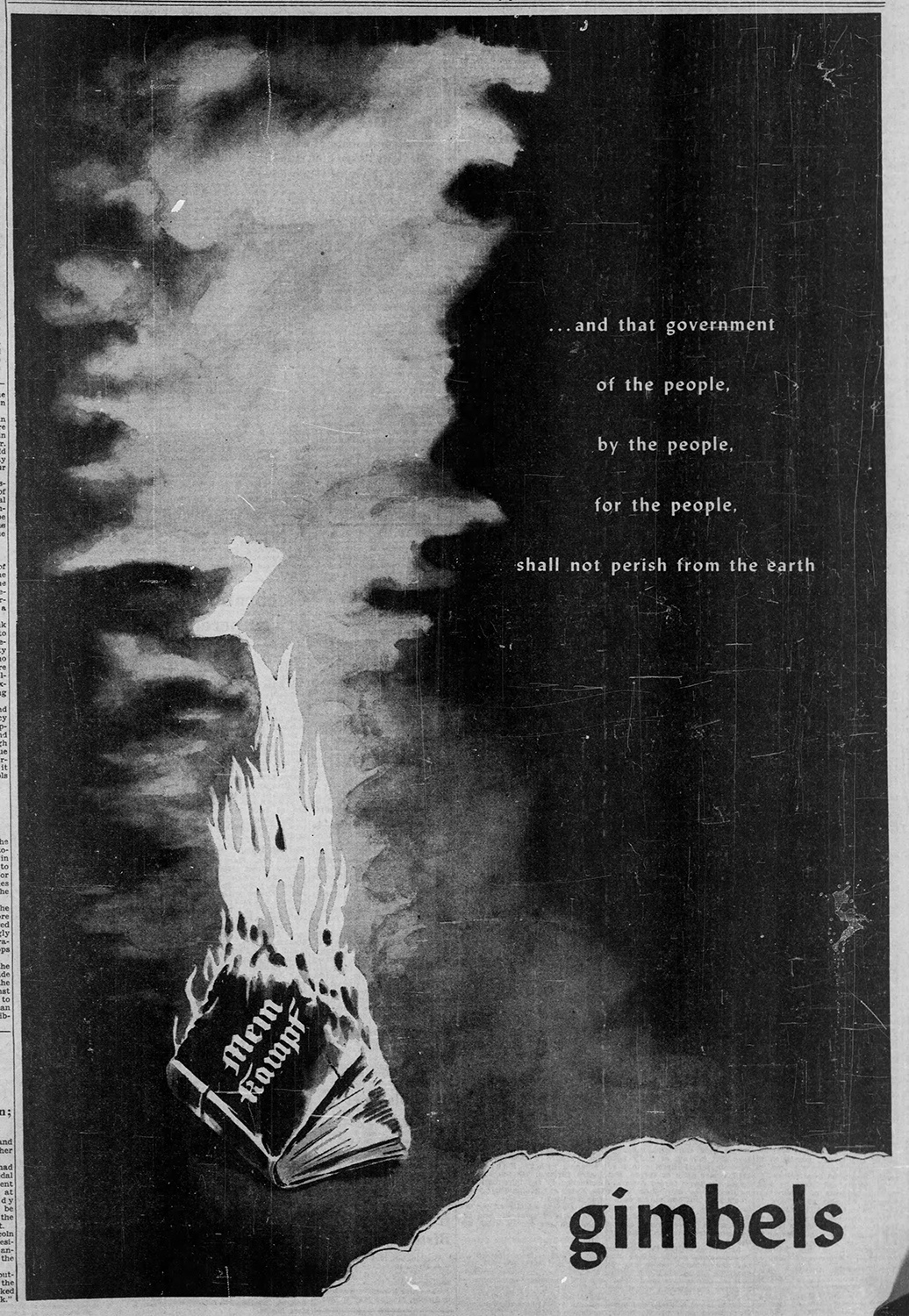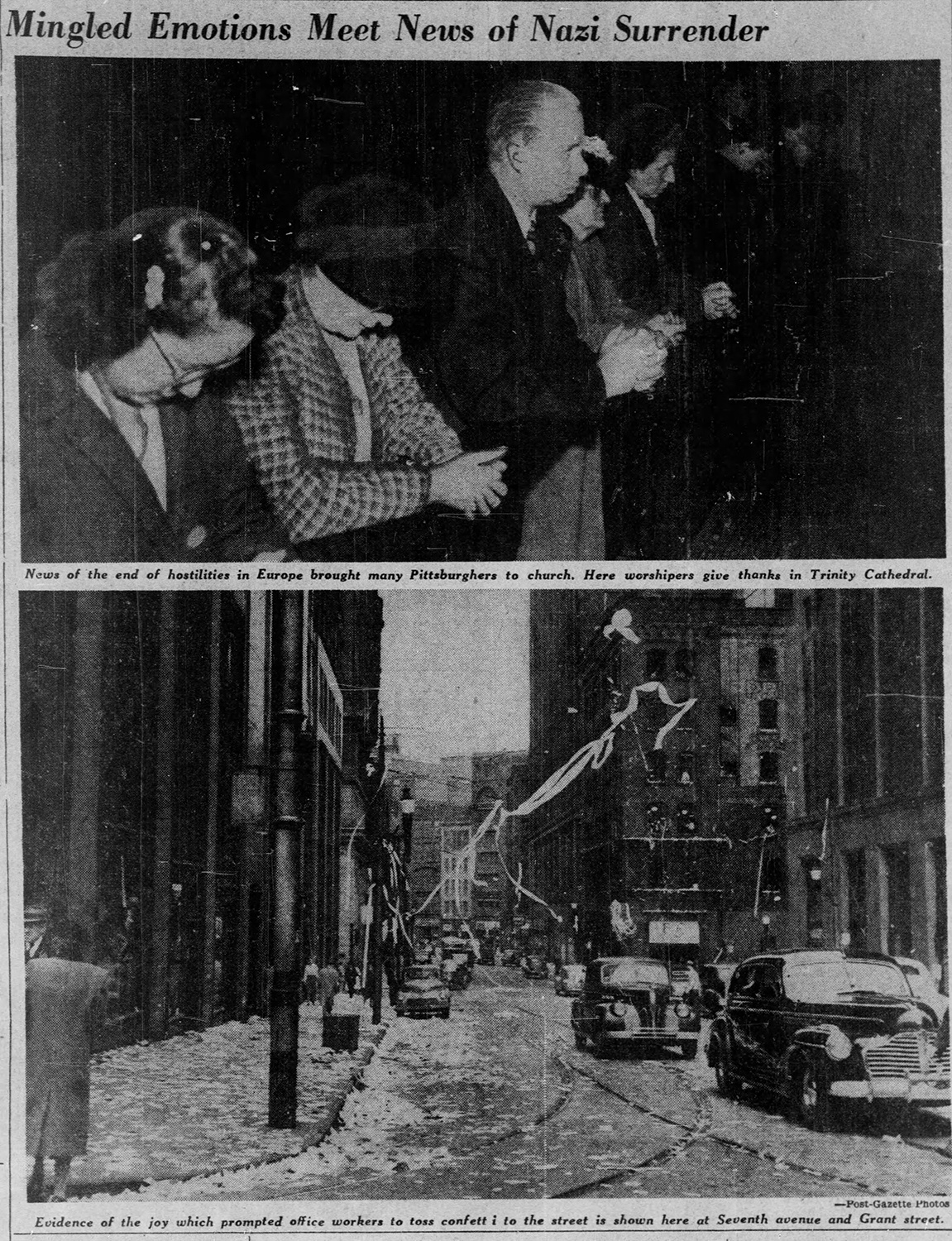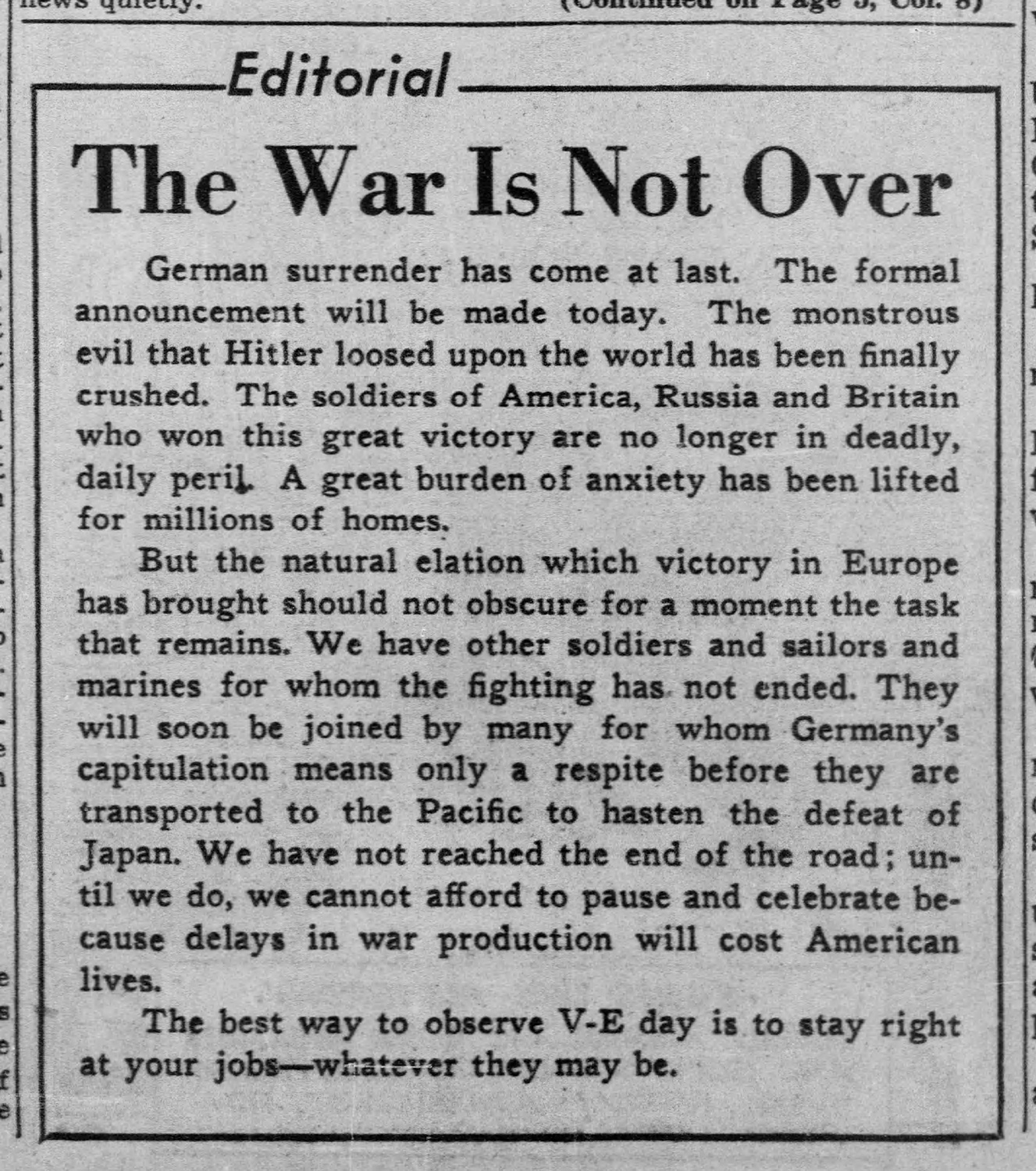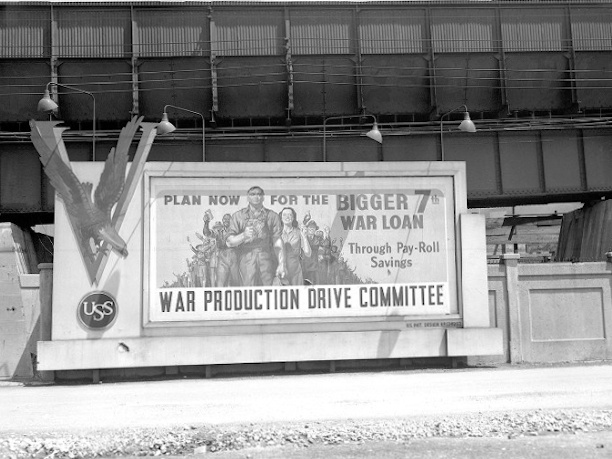
At first, not everyone in Pittsburgh believed the news. Rumors and bulletins on May 7, 1945 indicated that Germany had surrendered. But false alarms had come from Europe before. Where was the official word from Washington? Finally, at 9 a.m. on the morning of May 8, 1945, President Harry Truman confirmed the news in a radio broadcast: World War II in Europe was over.
Victory in Europe Day, or V-E Day, marked a moment of profound joy and relief in Pittsburgh and the nation. But those feelings were tempered by the realization that the war was not yet won, and perhaps worse was on the horizon. As May 8, 2020 marks the transition of the first group of Pennsylvania counties back to a partially “re-opened” status following weeks of shut down caused by the coronavirus pandemic, we look back at how this region struck a delicate balance 75 years ago, charting a public response that acknowledged the elation of V-E Day, but urged people to continue maintaining their resolve until the full victory was won. Although the context is certainly different, it is a sentiment with renewed relevance again today.
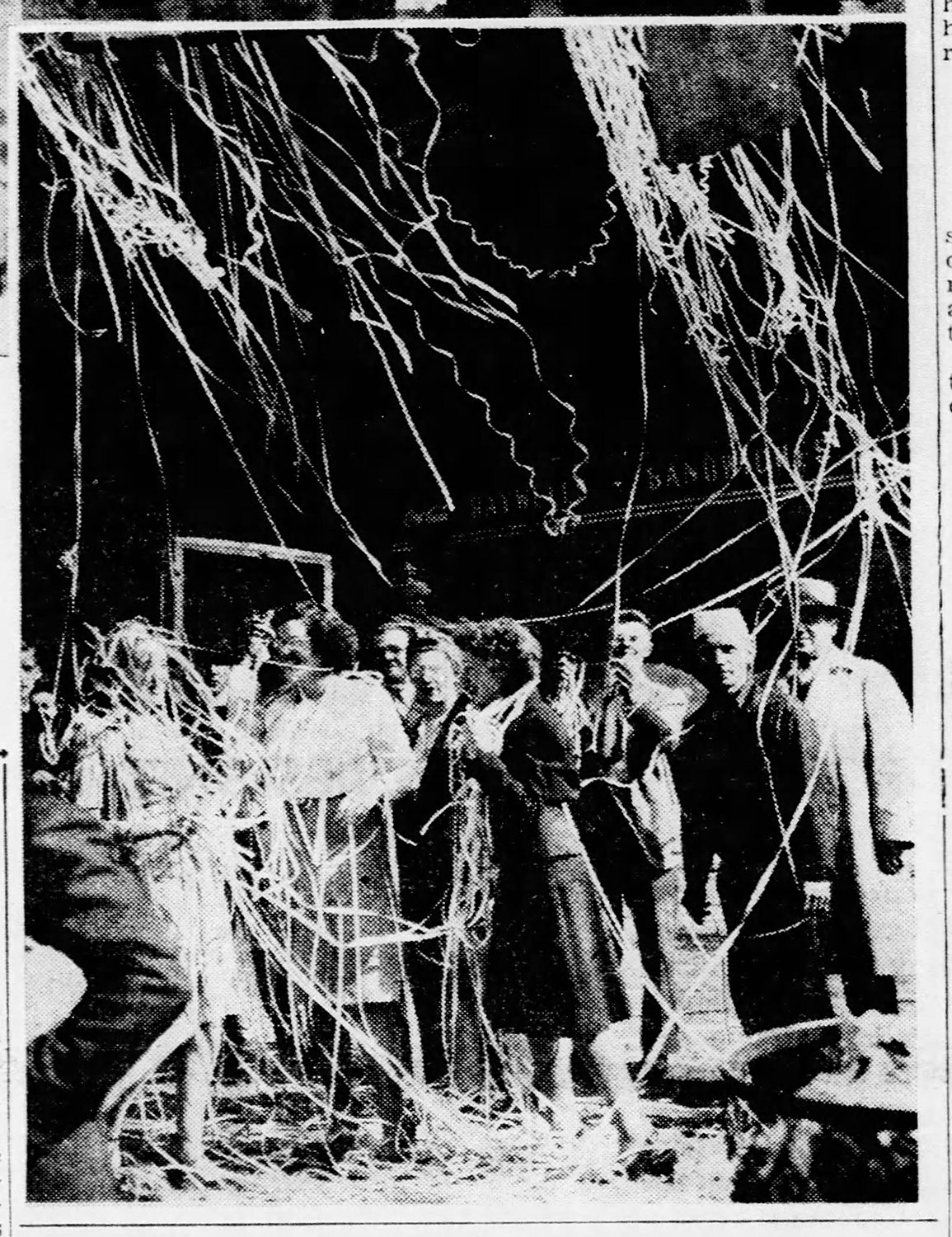
Celebrate, Work, and Pray
Authorities in Pittsburgh agonized for months over how to respond to the day they knew was coming. They worried about elation turning into public distraction and inappropriate displays of “bedlam” when there were still men on the front lines in the Pacific. Should businesses close? Should the sirens blow? At first, preliminary plans in April called for the city’s fire department and air raid sirens to mark the anticipated news, a goal complicated by the fact that the air raid sirens had not been used much since 1944. Then the Fire Department, bending to the Mayor’s preferences, announced that the fire sirens would not sound: the event was to be a somber reflection of everything that had gone into creating this moment. It would also be a sober one, at least officially. While retail stores and restaurants were encouraged to stay open, bars and liquor stores were closed.
While many people still responded by celebrating and downtown businesses launched a slew of ticker tape out of high-rise windows, authorities consistently strove to emphasize the larger goals at stake. The theme of the day, stressed Mayor Scully, was “Work and Pray.” This echoed President Truman’s request, for “work, work, and more work.” Factory whistles blew to inform millworkers of the news (you can read another Making History blogpost about how Carnegie-Illinois Steel Corporation planned their response to V-E Day), but their shifts continued. This did not stop everyone; there were reports of coal mines that could not operate due to absenteeism, and some factories reported problems as well. (No doubt the European background of many workers played into their personal responses.) But the main message was clear: Stay at your duty post.
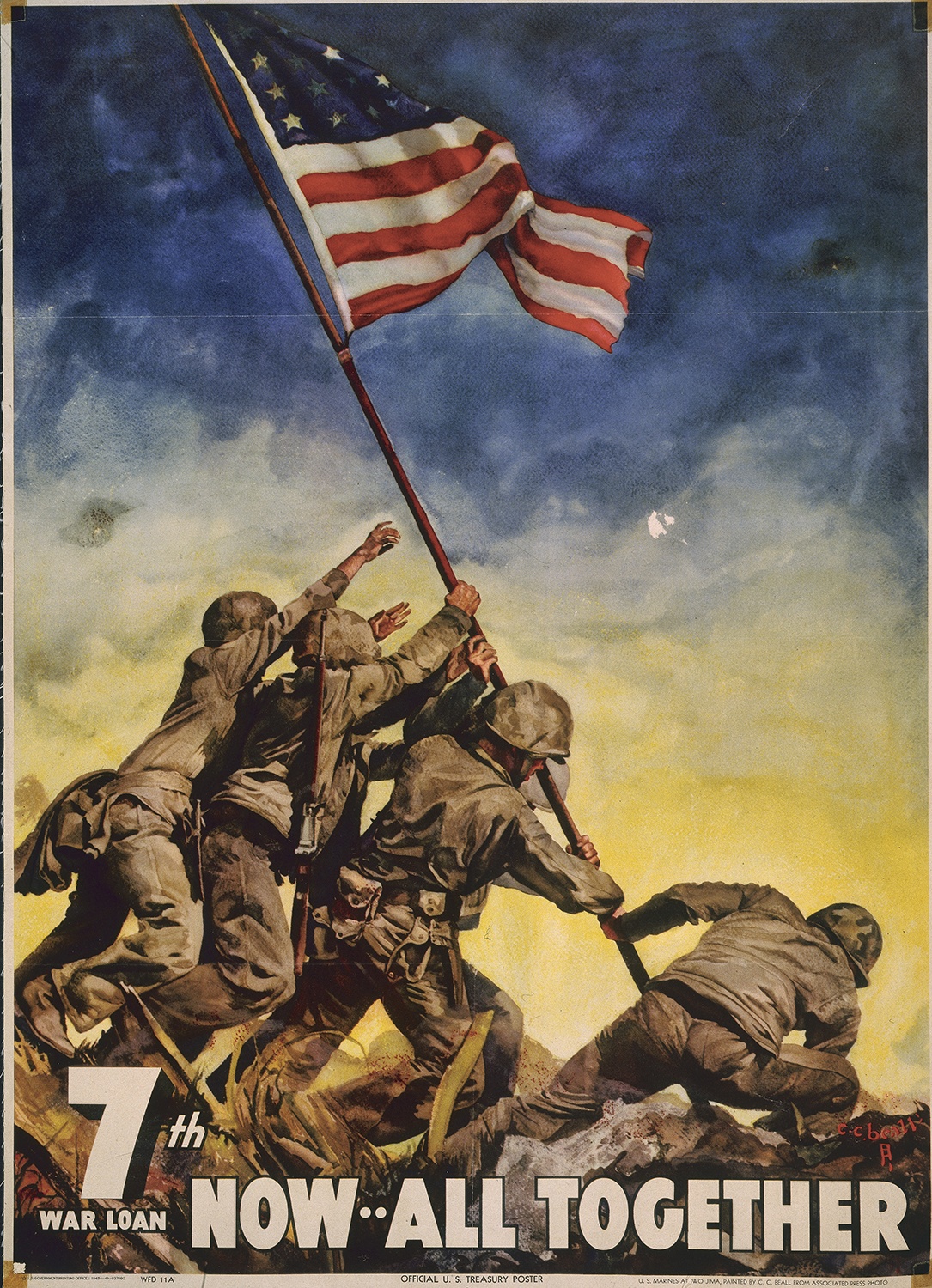
Now All Together
Flags flew at half-mast and churches opened their doors for prayer. At noon, the city’s official commemoration brought together church representatives, leaders from all branches of the armed forces, the mayor, and city and county politicians to speak about the moment and what lay ahead. The ramifications were felt beyond that day. On May 8, 1945, a billboard on the grounds of the Carnegie-Illinois Steel Corporation announced the upcoming 7th War Loan Drive, a crucial source of funding needed to maintain momentum in the Pacific. Officials were deeply concerned that a war-weary public, caught up in the relief of V-E Day, would not respond as they had in the past. Within months, the Treasury Department shifted their focus, creating a new 7th War Loan poster, titled “Now .. All Together,” that featured an image chosen to underscore the collective effort still needed to win the war: the famous flag raising on Iwo Jima. (Not so coincidentally, that image also inspired one American cartoonist to create a new pandemic version in April 2020.)
In an editorial printed in the Pittsburgh Post-Gazette on May 8, 1945, the writer summed up the mixed emotions probably shared by many that day:
“Our inner feelings are not measured by the amount of noise we make or the paper we tear up and throw on the streets. There will be as deep a sense of gratification in the United States as in any other allied nation over the great victory that has been won. But let’s not forget the soldiers, sailors and marines on the other side of the globe; they are too busy to take time out for hoop-la. We have a notion they’ll appreciate it if we keep plugging away, too.”
A similar thought could be given to the people still fighting on a different set of front lines today.
For Further Reading
To get a glimpse of some home movie footage of downtown Pittsburgh on V-E Day and hear Truman’s radio broadcast, check out:
Richard Cook, “Pittsburgh Then & Now: Watch VE Day in Downtown Pittsburgh,” Pittsburgh Magazine (Nov. 8, 2019).
To learn more about the 7th War Loan poster and the famous Iwo Jima image, see:
Leslie Przybylek, “Smithsonian Connection: Poster, 7th War Loan. Now · · All Together, U.S. Department of the Treasury, 1945.” Western Pennsylvania History (Fall 2015), 14-15.
Leslie Przybylek is senior curator at the Heinz History Center.

